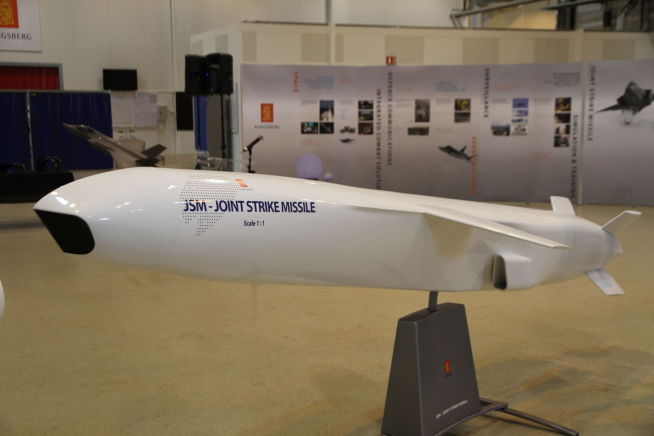F-35:den pinnoitteiden huoltoon on kehitelty uusi toimintatapa ja rakennus (erityisesti ilman kierrätyksen osalta).
Antaa samalla hyvää kuvaa siitä, millaisia toimenpiteitä pinnotteiden huolto elinkaaren aikana vaatii.
Next Generation Coatings Booth Poised to Save Air Force Millions in Energy
http://www.defense-aerospace.com/articles-view/release/3/182336/f_35’s-baked_in-coatings-still-require-extensive-maintenance.html
(Source: US Air Force; issued March 27, 2017)
WRIGHT-PATTERSON AFB, Ohio --- It only makes sense for the Air Force’s newest, most complex, multi-role fighter to have the most advanced, state-of-the-art sustainment facilities to ensure enduring power for years to come.
The Air Force Research Laboratory’s Advanced Power Technology Office is on the front lines of making this happen for the F-35 Lighting ll.
A next-generation F-35 coatings application booth at Hill Air Force Base, Utah, the first of a series of three planned units, is nearly complete and set to become operational by October 2017. Part of a multi-year, collaborative project with multiple stakeholders from across the Air Force, Defense Department, government and industry, these facilities will enable safer, cheaper and energy efficient sustainment for the force’s preeminent fighter now and in the future.
“The F-35 is a huge program for the Air Force and planning sustainment is important. It’s important to get it right,” said David Madden, the APTO Program Manager at AFRL’s Materials and Manufacturing Directorate. “The F-35 program office came to us and asked for help in designing a cutting edge, state-of-the-art, energy efficient and environmentally-friendly facility. We worked with a lot of partners on this — scientists, maintainers, process teams — from across government, academia and industry to make sure everything was right in design. We are excited about the upcoming testing.”
The new booths are designed for the application of aircraft coatings, which are critical to the operational life of an aircraft. These coatings enable such things as heat resistance, corrosion protection and more on a platform.
Typical application of coatings is extremely costly in terms of energy consumption as well as environmental impact and safety needs to ensure the health and protection of maintenance staff. Additionally, as an aircraft ages, older coatings need to be removed and replaced—a process that can use considerable amounts of energy.
During the early stages of booth research and design, a significant amount of time was dedicated to consulting with maintainers as well as environmental and technical experts to collect data to help identify and understand specific logistical needs of the F-35 depot teams. Madden said the goal was to maximize the use of commercial technologies, automation and up-front investment to reduce the life-cycle maintenance costs over the long term.
One way this was accomplished was through a project that modeled airflow and circulation. Analysis led to the development of an air recycling process, which reduces the energy cost typically associated with the coating process. By recirculating up to 70 percent of the air in the booth, it is estimated the Air Force can save more than $330,000 in energy annually.
“When coating an aircraft there’s a lot of spray and overspray that occurs, and a constant flow of air crosses a work area to take the excess spray away. Typically, ‘new’ air is forced through the booth to remove the harmful particulates,” said Madden. “Using sophisticated computer modeling, our team was able to show on a simulation the pattern of air flow. We then developed an airflow approach that is able to filter out the particulates and reuse the air, saving all kinds of energy typically associated with conditioning new air. Bioenvironmental engineers evaluated the models and determined that the models were good—this is safe.”
Another novel aspect of these booths is the use of sensor automation for data collection and metrics that can enable life-long improvements and savings not only at the depot at Hill AFB, but across the Air Force sustainment enterprise.
“Extra flow meters and additional sensors have been included in this booth that may, for example, be able to calculate the amount of energy used per gallon of paint sprayed or measure how much electricity is used for each aircraft completed. We can then use these different ratios from the sensor metrics to determine which are the most meaningful. In this way, we could develop production efficiency metrics that can be compared with traditional booth operations across the Air Force,” Madden said.
The new booths also take into account future robotic capabilities and are designed with enough space and clearances to enable the addition of automated technologies for coating applications.
“Rather than trying to fit the most we can in a minimum amount of space, we thoughtfully designed the booth with enough space to be able to add robots at a later date. Through automation, we would be able to move the operator out of the paint area and into a conditioned control booth. This would eliminate the need for excessive personal protective equipment and provides a much safer work environment. Robots are a possible way of the future,” Madden said.
By using advanced mechanical systems, sensors and energy efficient technology, the new booths provide an organic capability to Air Force maintainers that will yield millions of dollars of energy savings over the lifecycle of these elite platforms.
“The APTO team is known across DoD for its expertise in facilitating energy efficiency projects. This was a great team collaboration and we’ve created an organic capability for the Air Force,” Madden said.
By employing the state-of-the-art, conventional and advanced materials and processes in its work, the APTO team leads the way in ensuring Air Force supremacy today and for generations to come.




